

Fish have been on planet earth for more than 500 million years, and their origin is more ancient than dinosaurs. They have a variety of colors and patterns, which makes them one of the most beautiful creatures on Earth. The Puffer Fish is one of the awesome fish species on this planet.
Pufferfish are some of the more recognized species in the sea, known for their ability to inflate into a thorny balloon that all but screams, “Get away!” When not agitated, these creatures are rather curious about divers, swimming closely with what appears to be a permanent grin, watching your every move. If you’re as fascinated by pufferfish as we are, tuck into these interesting facts about pufferfish that you may not have known!
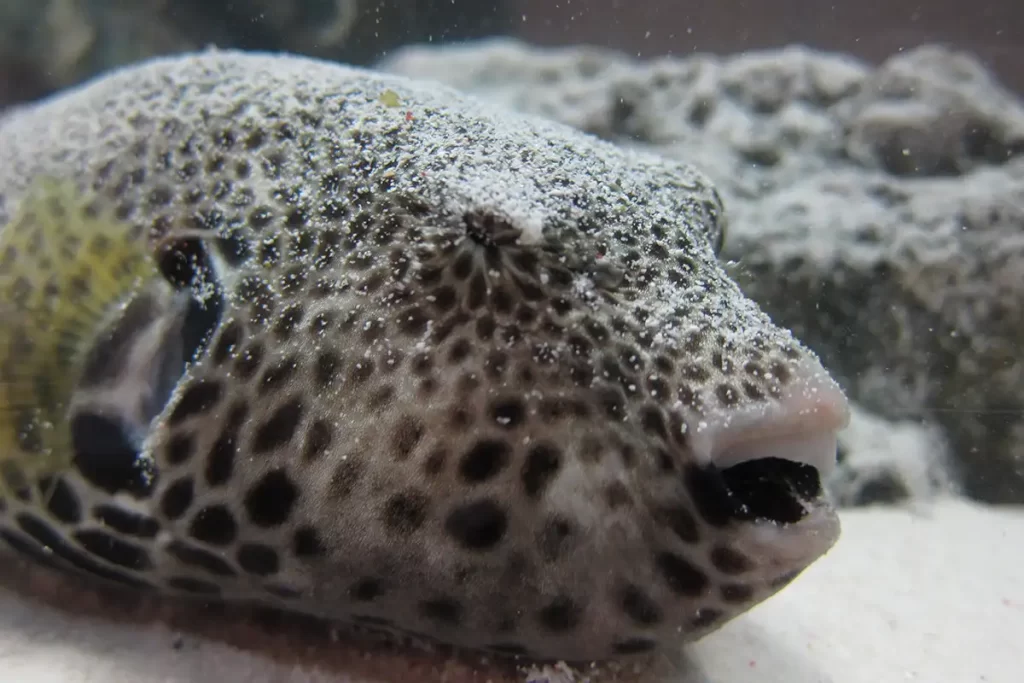
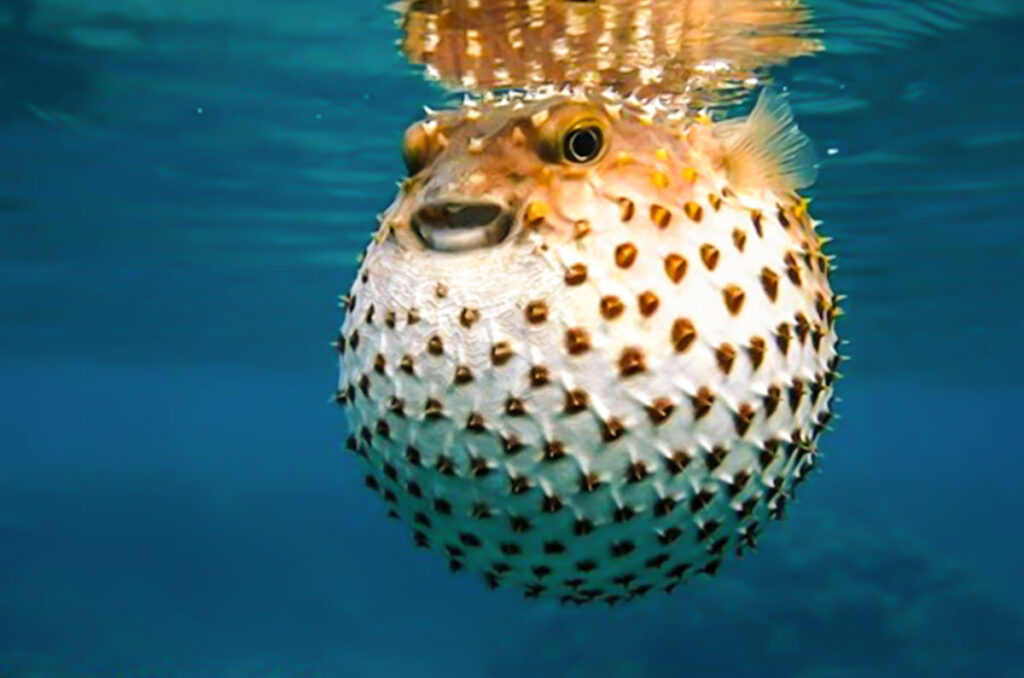
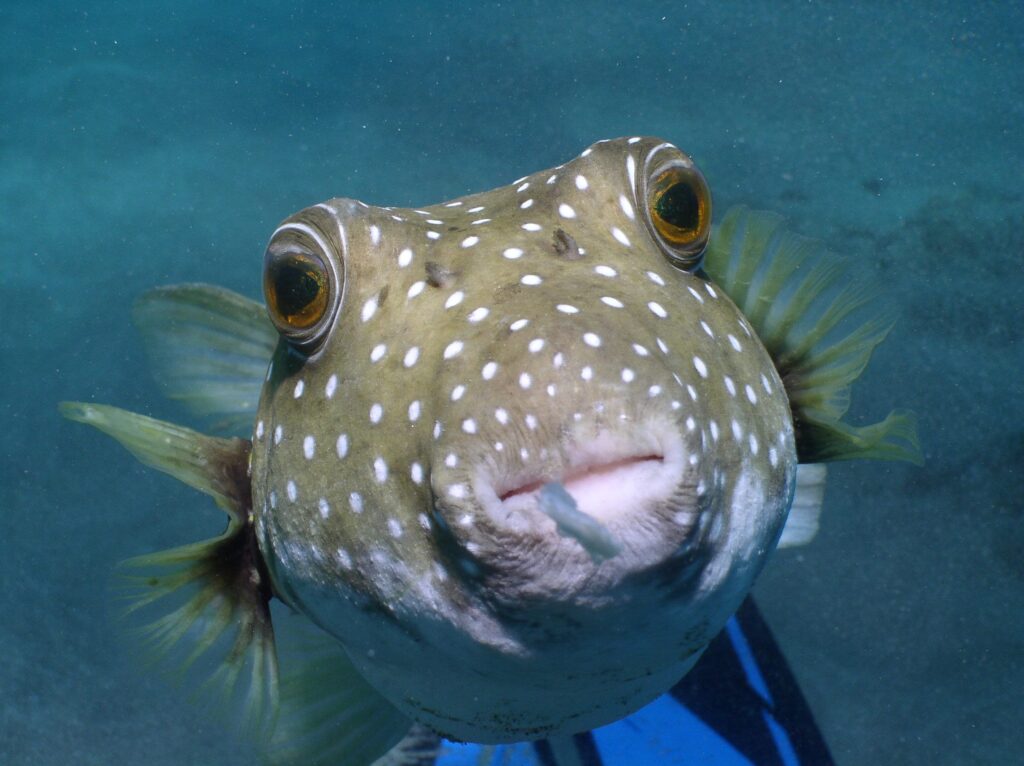
Puffer fish are also known as blowfish, fugu, swellfish and globefish.
The pufferfish are fish making up the family Tetraodontidae.
The scientific name, Tetraodontidae, refers to the fact that they have four large teeth, fused into an upper and lower plate, which are used for crushing the shells of crustaceans and mollusks, their natural prey.
Their teeth are so closed with each other, that’s they look like they are fused together and never stop growing//Most pufferfish are found in sub-tropical and tropical marine waters (including coral reefs) in the Atlantic, Pacific, and Indian Oceans, but some are also known to live in brackish and fresh water.
About 39 species of puffer fish that inhabit marine waters swim into fresh and brackish waters to breed and feed.

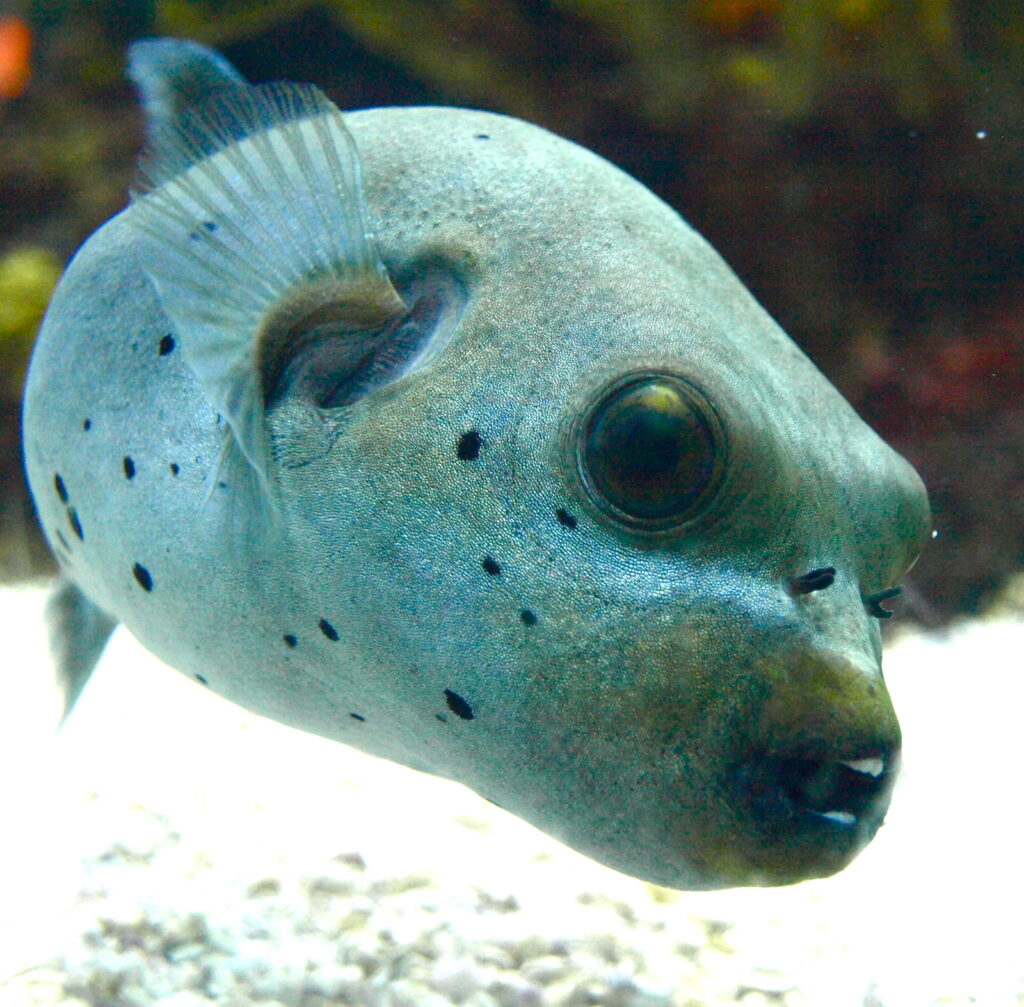
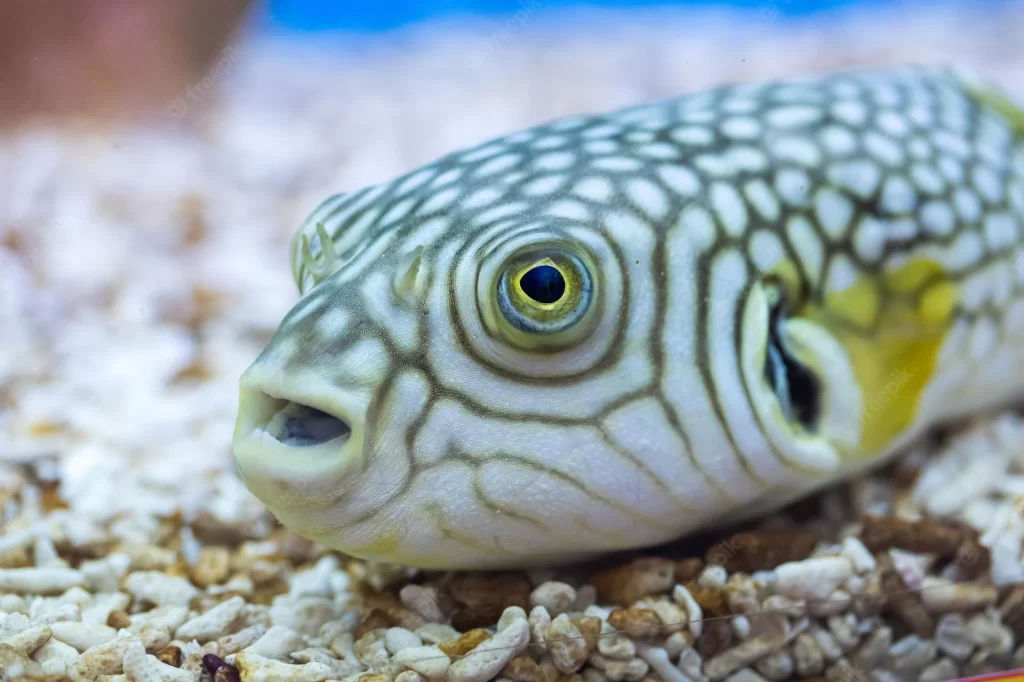
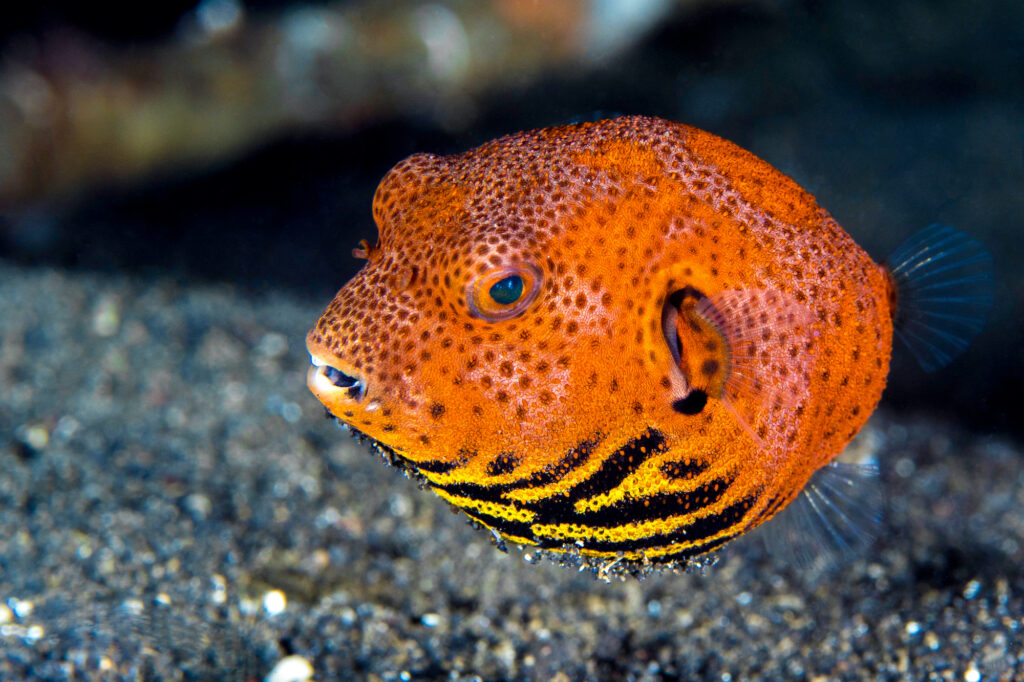


There are more than 120 species of pufferfish worldwide. Most of them are marine-water fish but there are 40 types of puffer fish found in brackish waters, a mix between salt and freshwater, and 29 species are found in freshwater.
They are called the pufferfish because when they are threatened, they puff up to about twice their normal size by gulping water.
As the puffer fish gulps in water, its stomach inflates and can grow up to 100 times to its original size.
Puffers have tough, usually prickly skins. The spiny puffer has long spines all over its body. When it inflates, the spines stick out like porcupine quills.
In that enlarged state, the pufferfish can swim at only about half their normal speed.
A puffer fish stomach is extremely elastic.
A young puffer fish is called a fry.
Pufferfish are often called “the butterflies of the sea” because they have brightly colored scales which resemble wings.
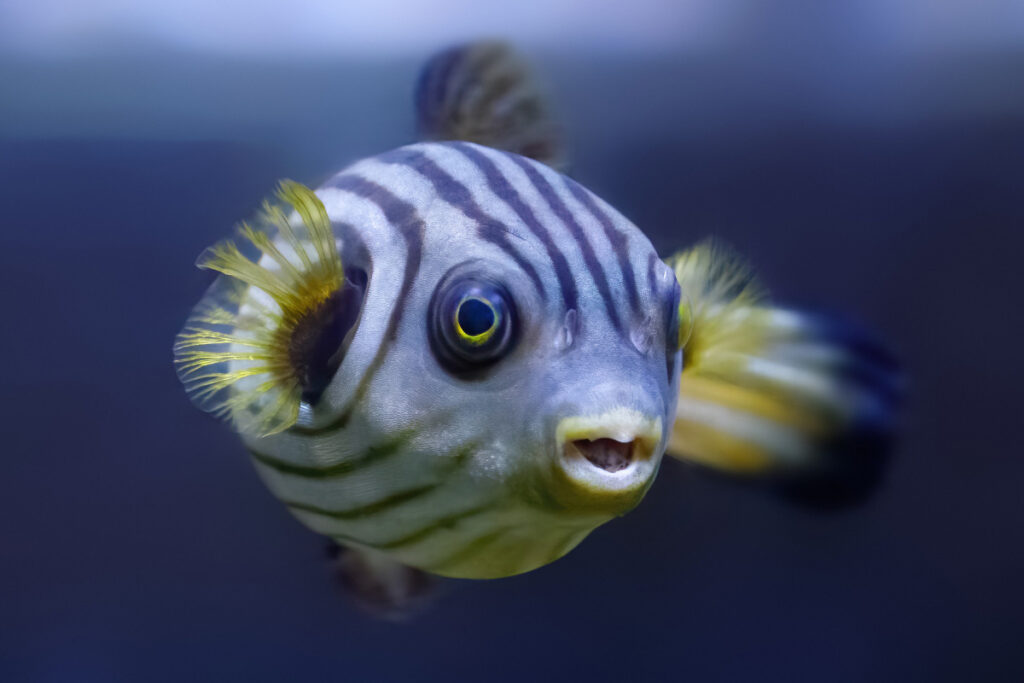
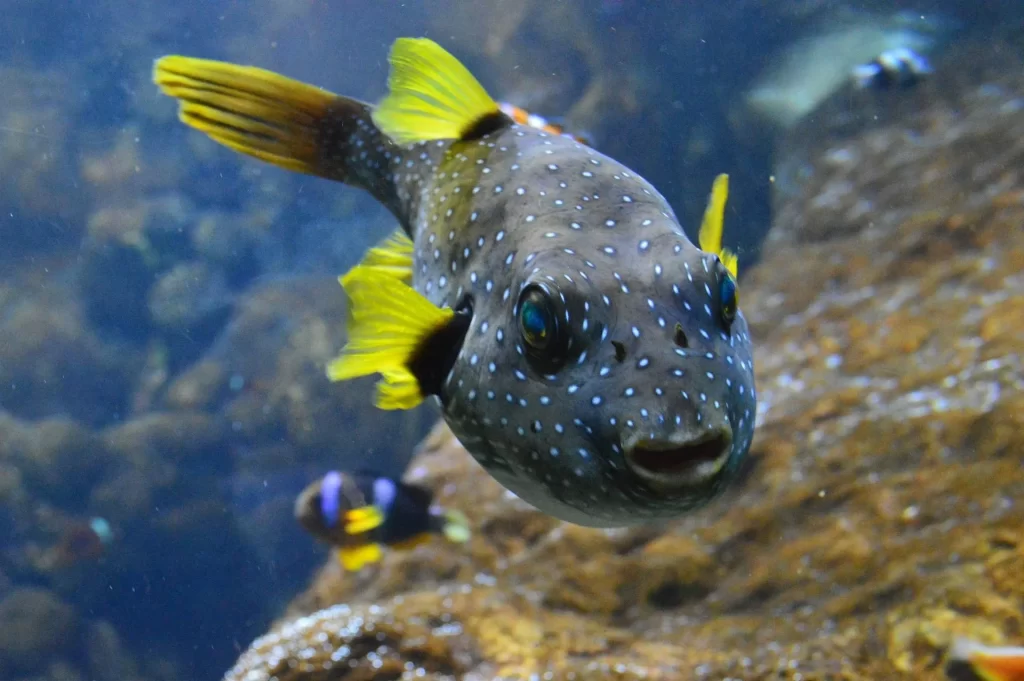
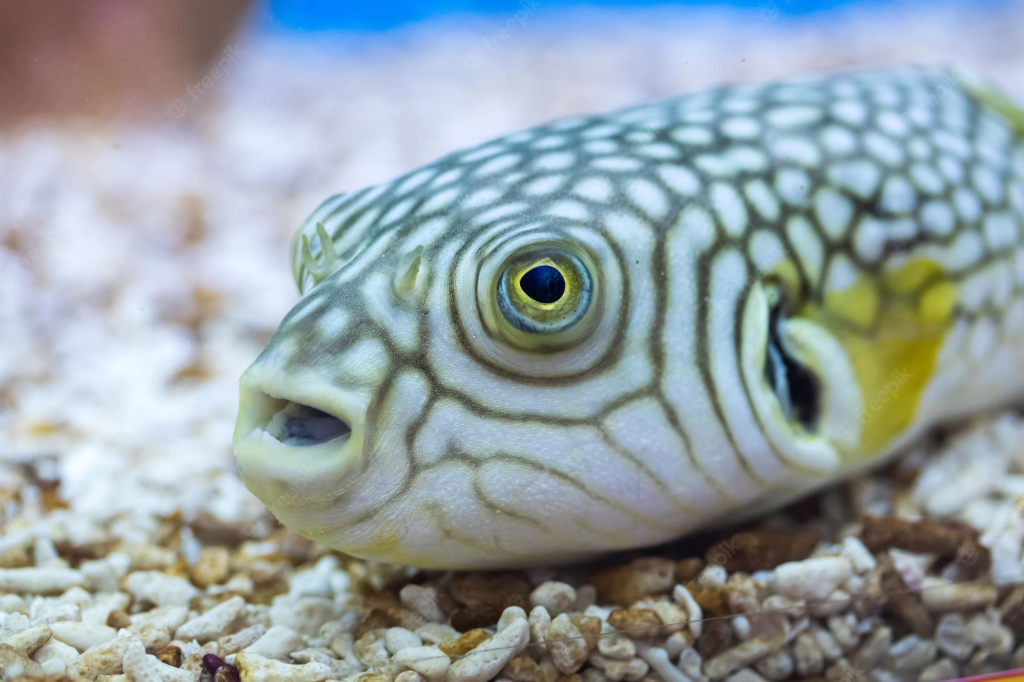
They can change color.
They have excellent eyesight.
The smallest species of pufferfish is less than 1 inch in length when fully grown.
The largest species in pufferfish can grow more than 2 feet in length when fully grown.
Pufferfish come in a wide variety of different colors with many different markings.
Puffer fish mostly eat invertebrates using their beak. The puffer fish beak is a combination of 4 teeth that have been fused together.
A puffer’s skin is covered with special cells called “dermal denticles,” which are like tiny teeth that point inward. This helps to protect the fish from attacks and predators.

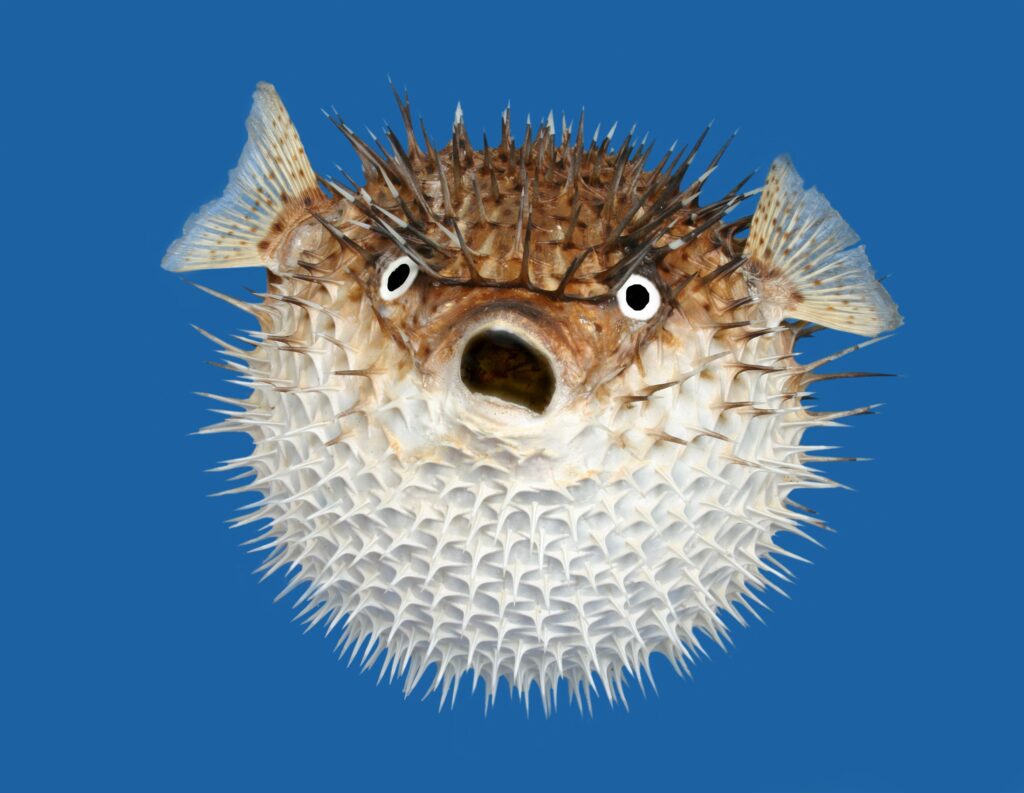
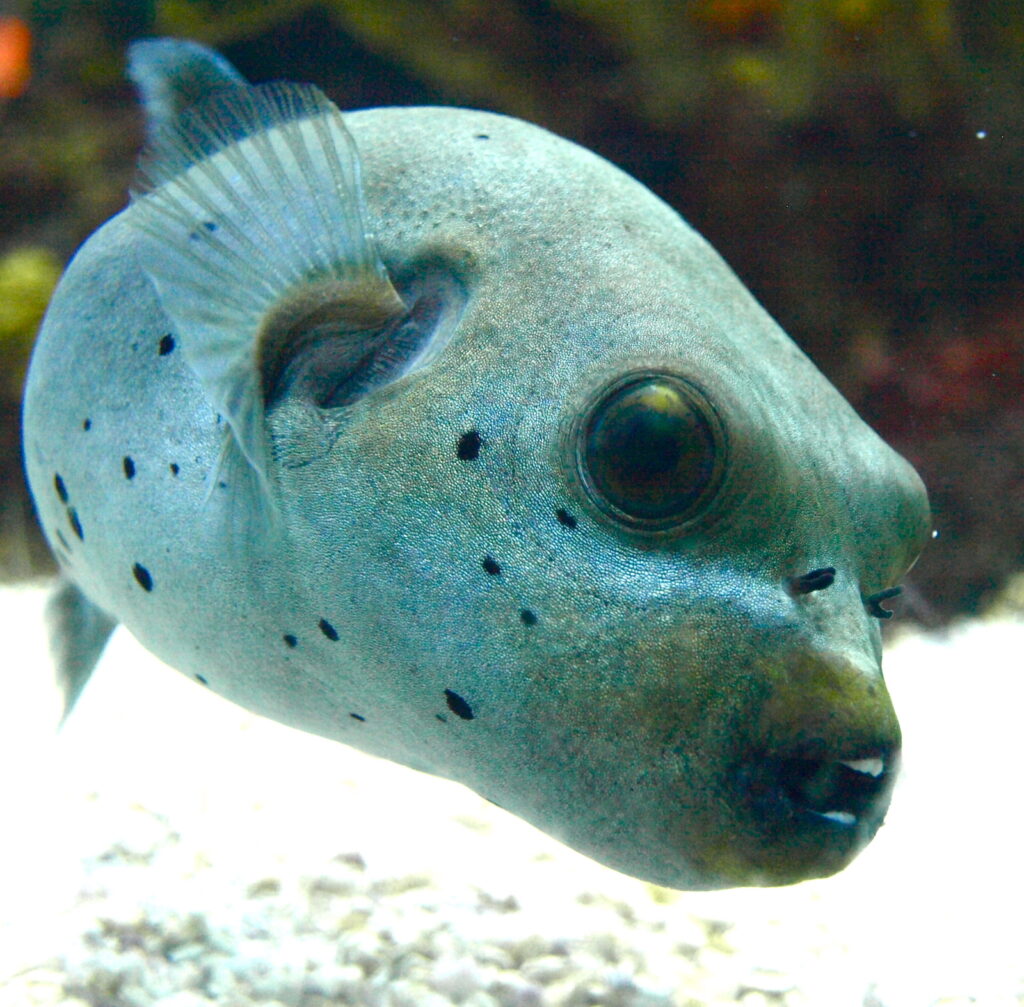
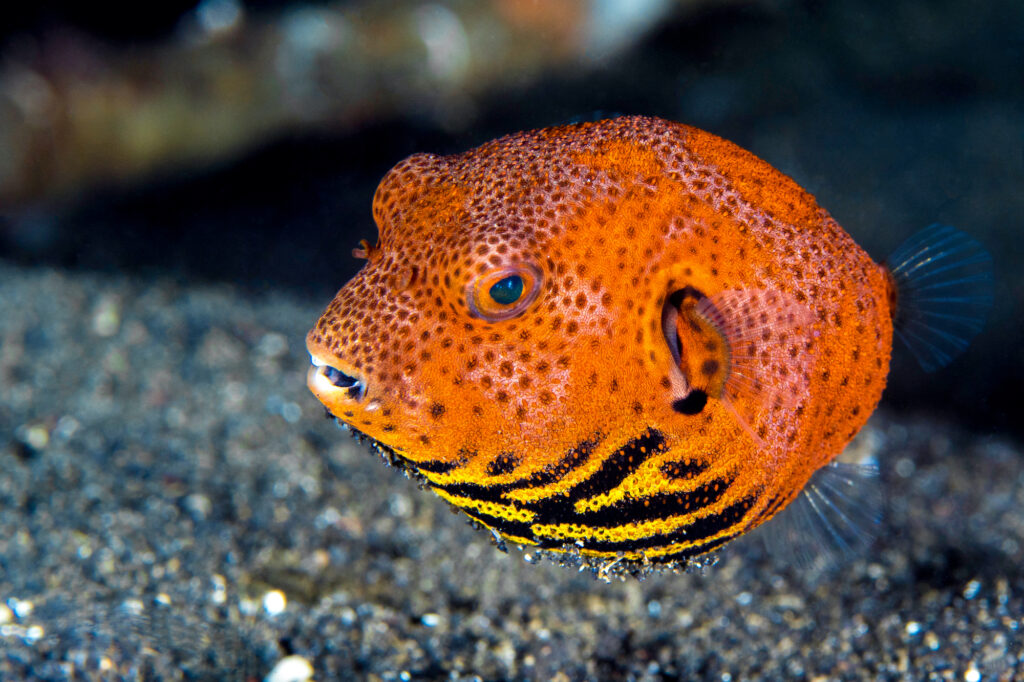
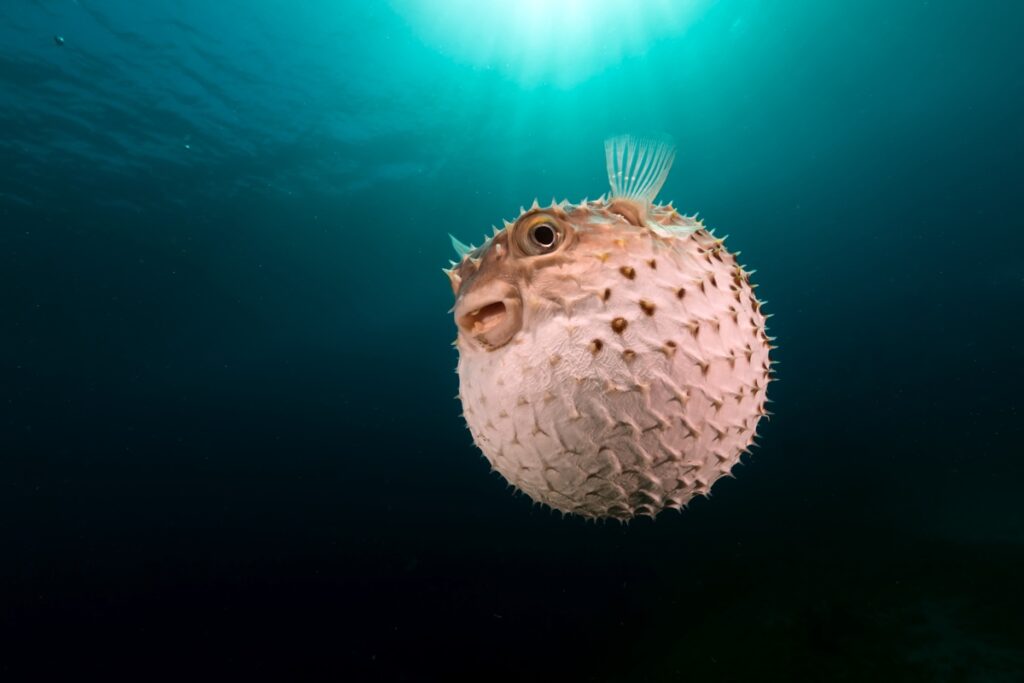

Pufferfish rarely swim; instead, they float on top of the water thanks to a large sac filled with oil.
They are highly intelligent and can distinguish between different types of food, as well as knowing when it is being threatened.
They produce high-pitched chirping sounds which they use to communicate with their own species.
Female pufferfish change into males if there are no other males around to breed with.
Forty-four fugu poisoning incidents were recorded in Japan between 1996 and 2006.
A dish prepared from puffer fish is called Fugu.
Captain James Cook, a famous British explorer, was involved in the first recorded case of people eating pufferfish.

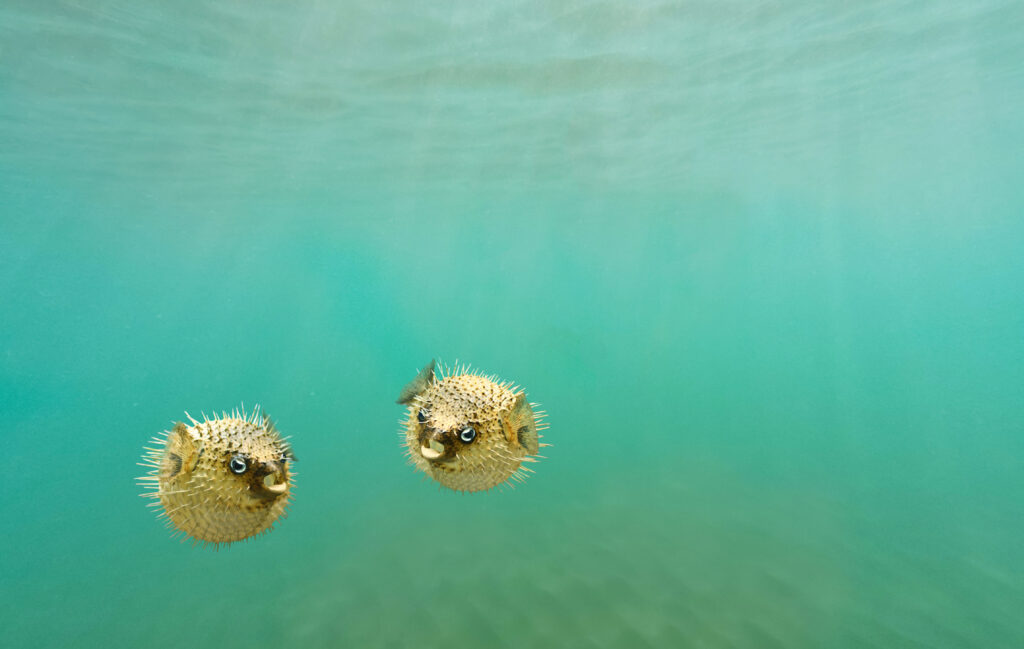
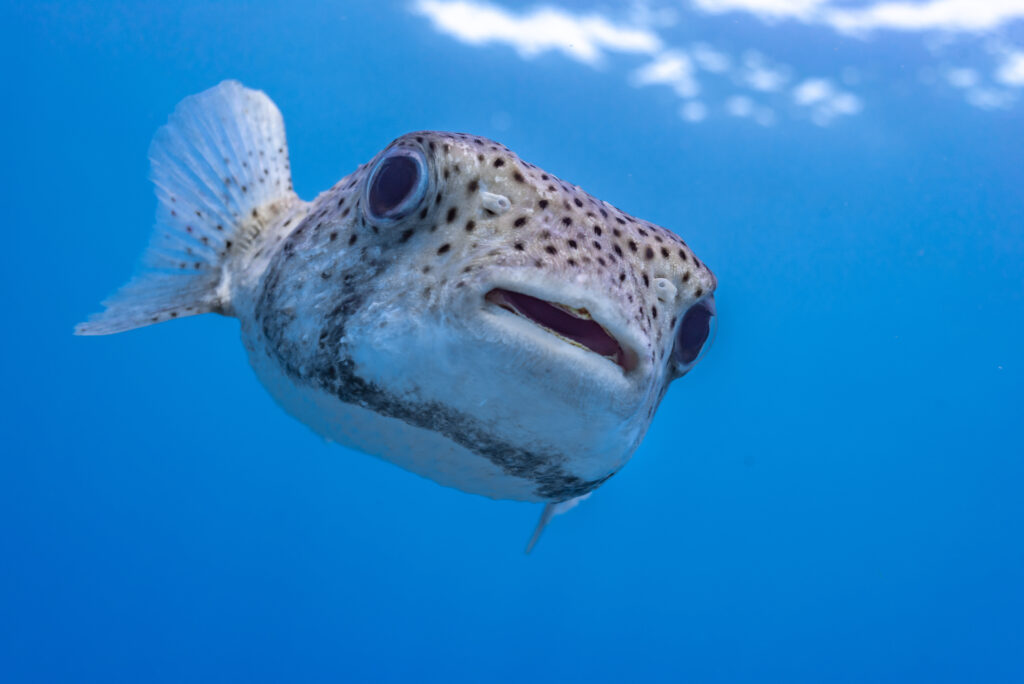
If a Puffer Fish is fully grown, its weight can reach up to 30 pounds, and its size can reach up to sixty-five centimeters.
These are aggressive fish that are willing to attack anyone they perceive as a threat. Puffers usually live alone and do not usually share their territory with other fish.
Puffer fish do not have scales. Instead, they have thick and rough skin to help protect against predators.
This fish is carnivorous.
Some puffer fish also have spikes on their skin that stick out when they swell up which is even more useful against predators.
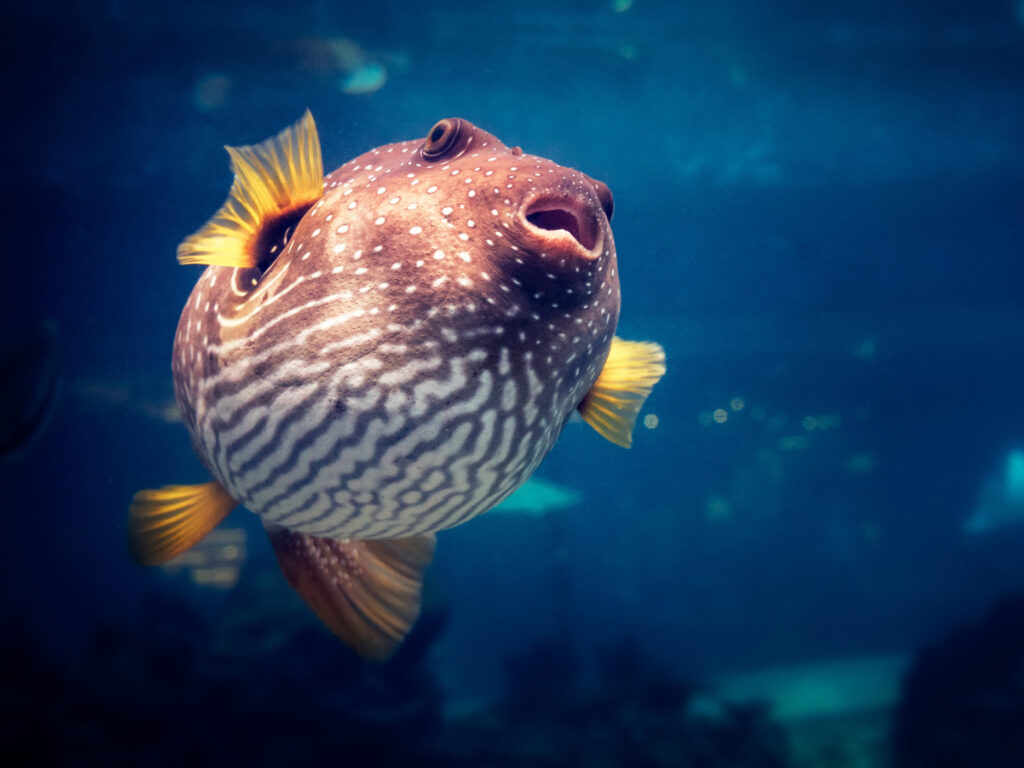
Puffer fish make adorable pets and can adapt to aquarium lifestyle easily. They require special dietary needs and clean and spacious environment to maintain a healthy body.
Pufferfish care is relatively easy and they’re a very interesting addition to any home aquarium. Just remember that pufferfish require plenty of space with lots of rockwork, live or plastic plants, a good protein skimmer for filtration, stable temperature, and salinity levels.
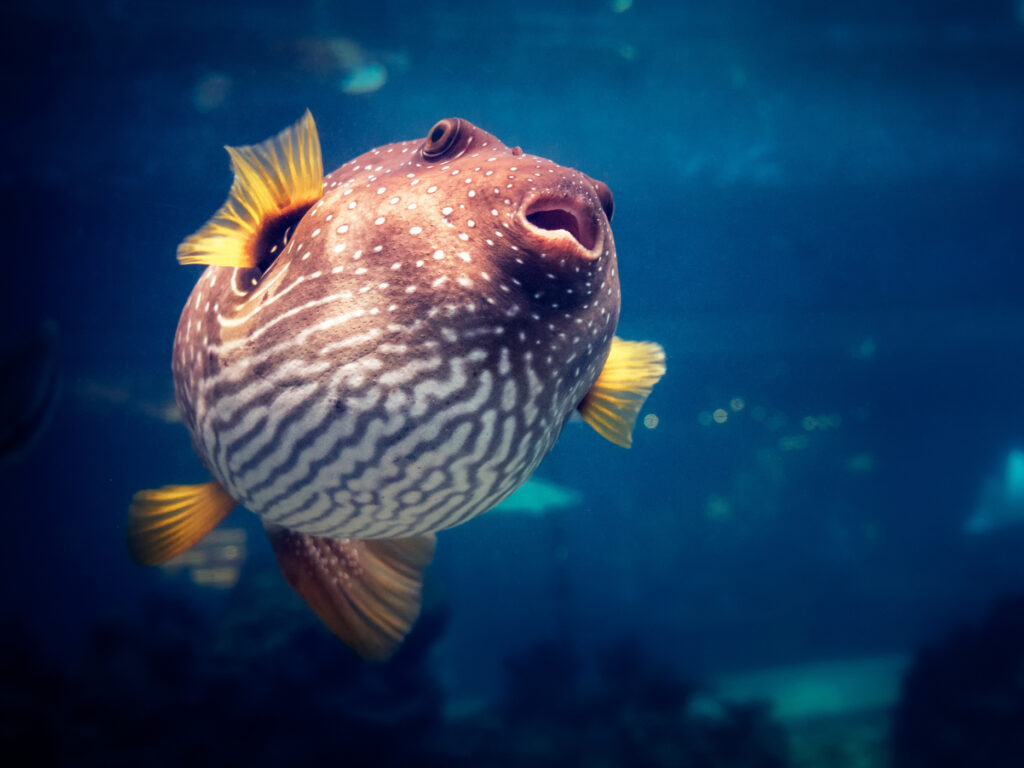
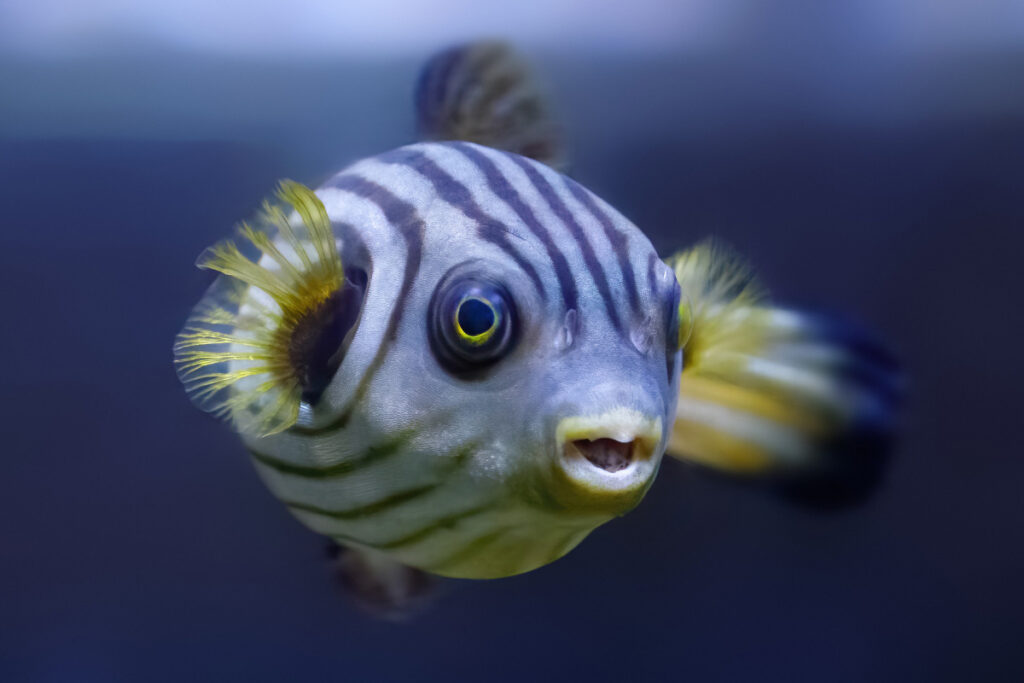
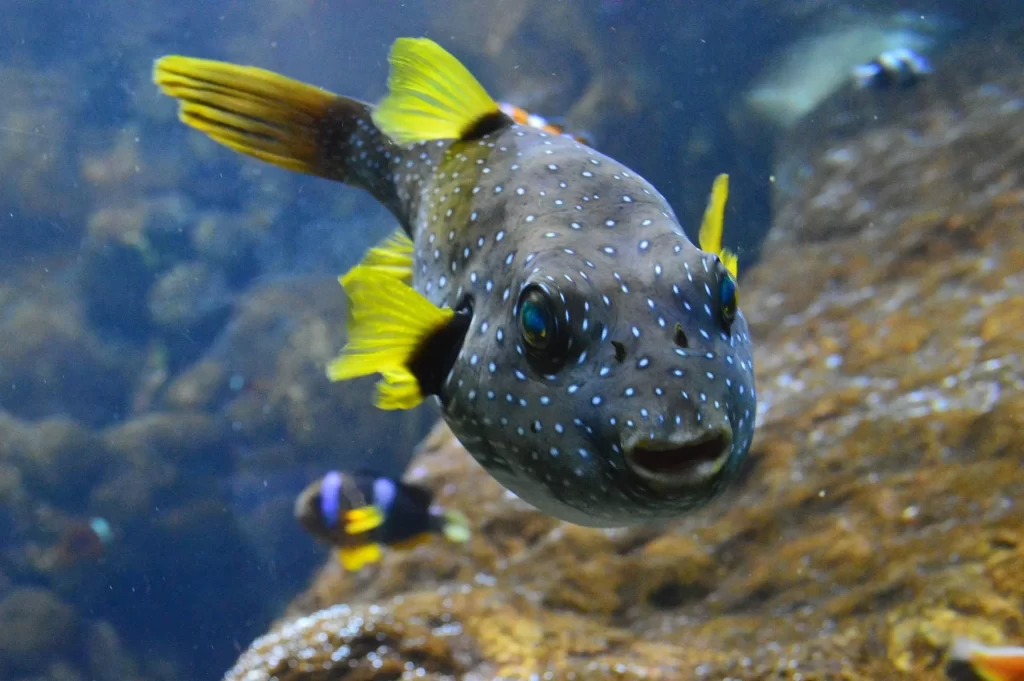
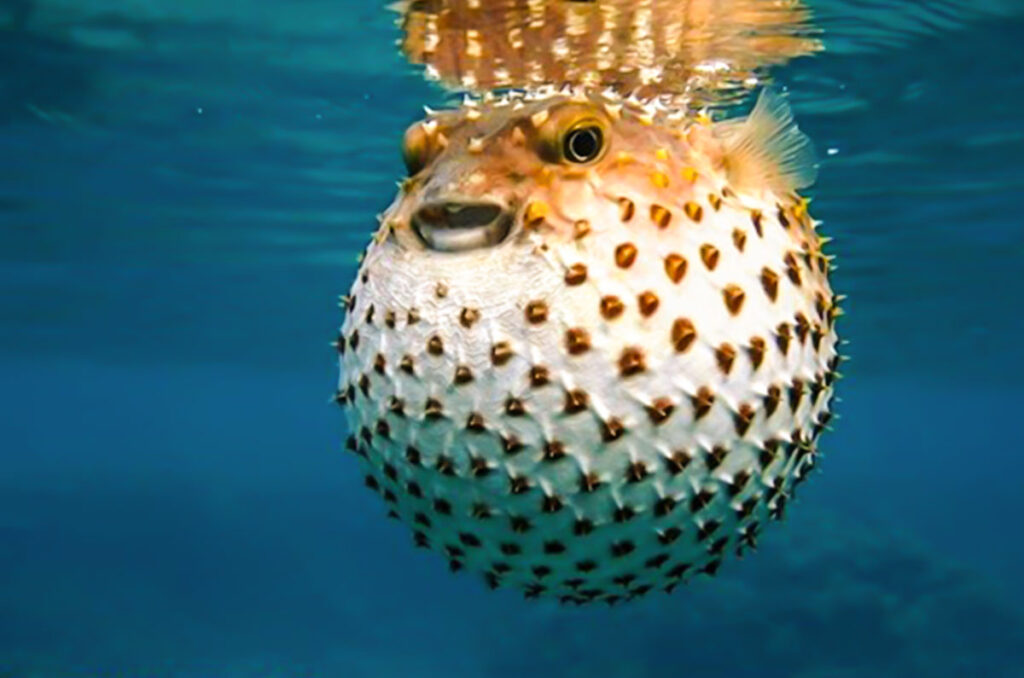
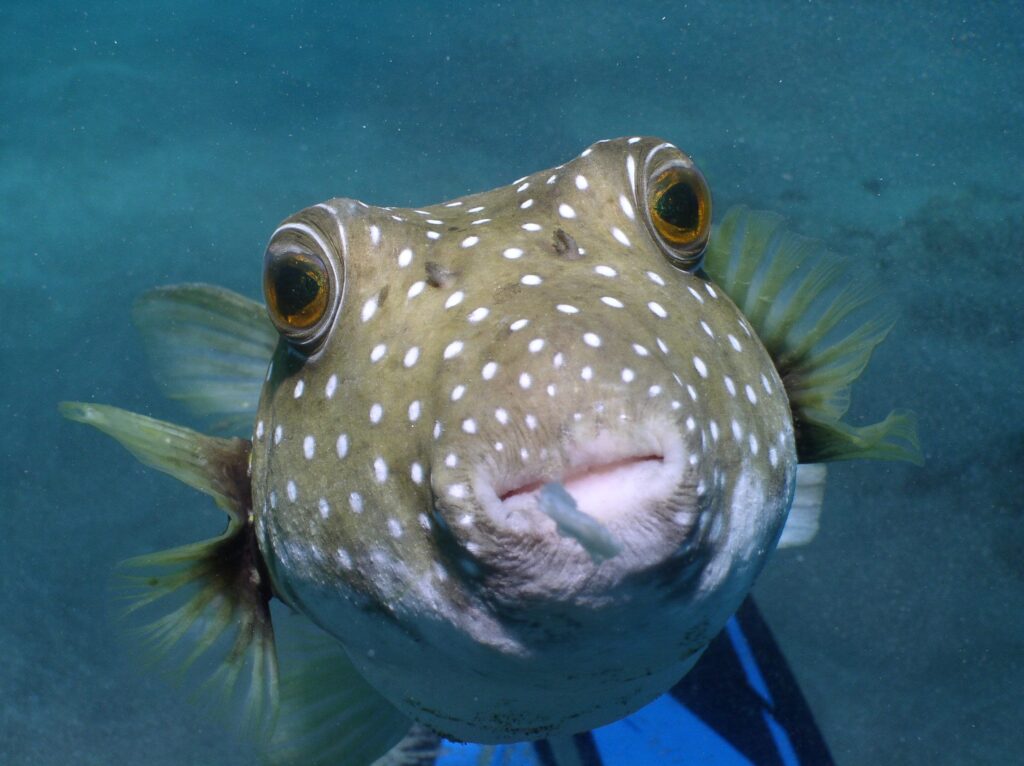
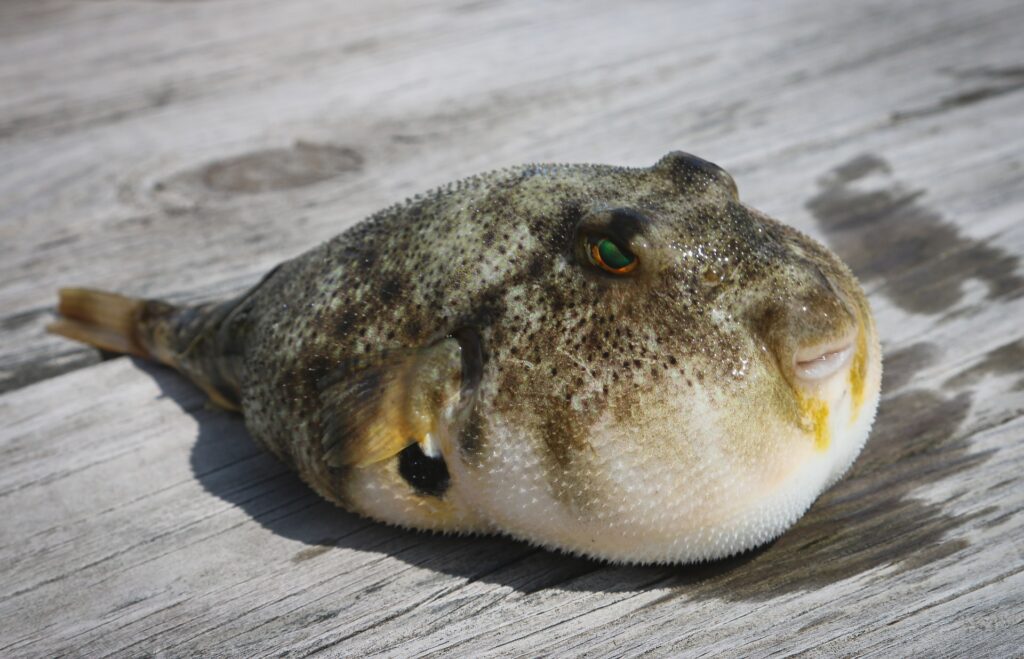
The pufferfish diet is probably the most important element of keeping a puffer fish. They are carnivores and require accordingly sized food such as brine shrimp, krill, mussels, squid, clams, and silversides.
Pufferfish are very aggressive creatures and should never be kept with other fish or invertebrates. They will eat anything that fits into their mouths, even if it’s a member of the same species.
Pufferfish are generally believed to be the second-most poisonous vertebrates in the world, after the golden poison frog.
The main feature of the puffer fish is that they are able to ingest large amounts of water and air which can increase their body shapes and size.
When the puffer fish is fully “puffed” it can be on average 3 times its normal size.
Most puffer fish contain a toxin called “Tetrodotoxin”. This toxin is extremely deadly to other sea creatures and is also deadly to humans.
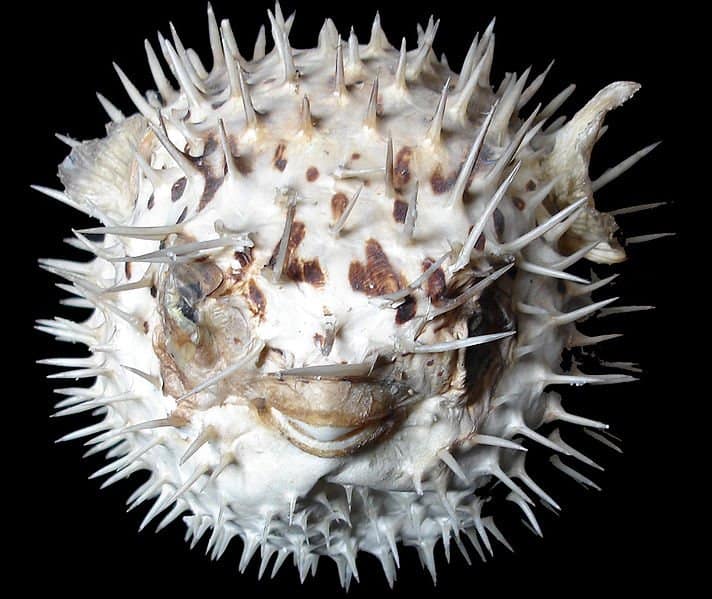
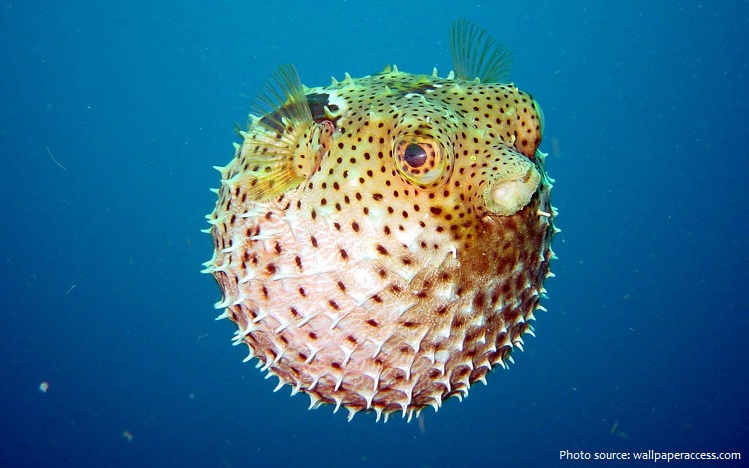
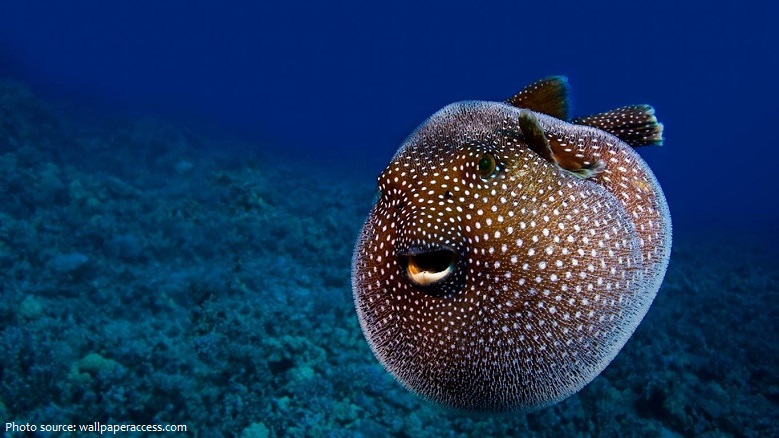
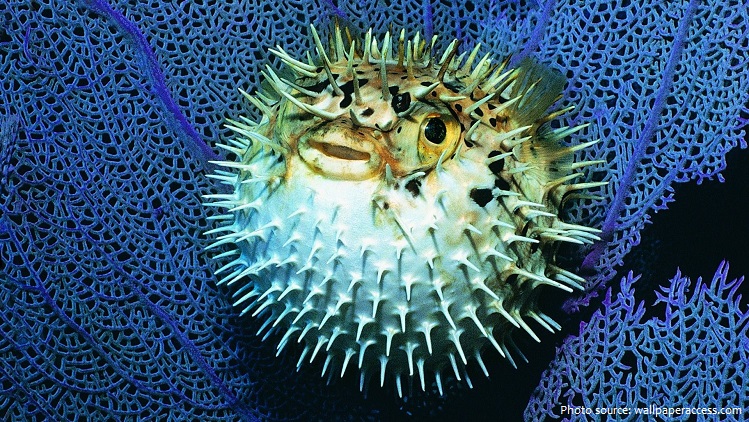
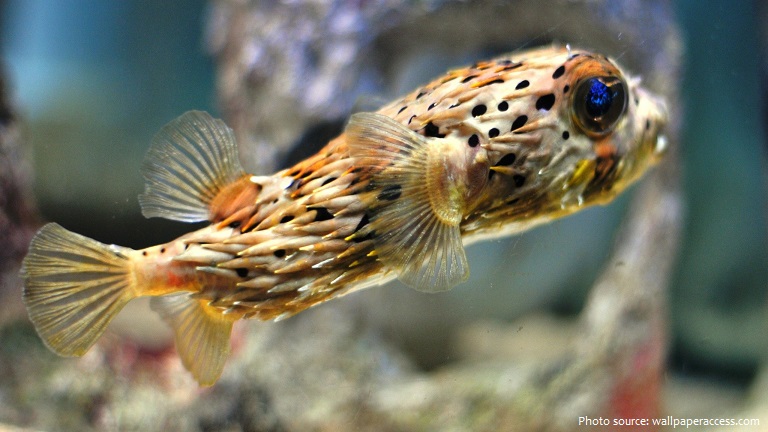
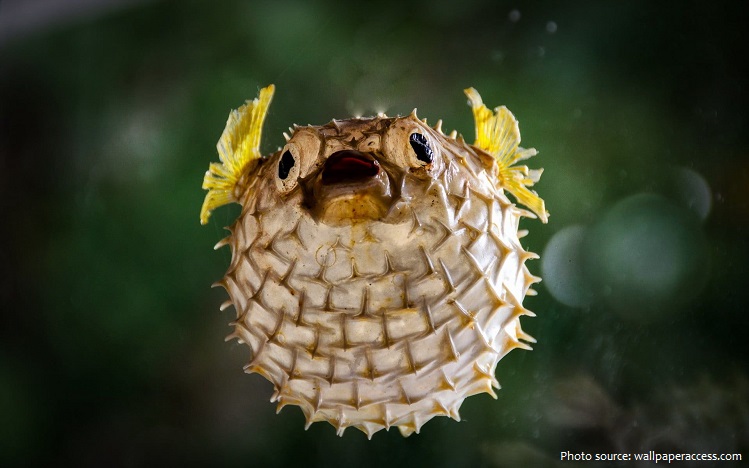
The tetrodotoxin is an extremally powerful neurotoxin. This toxin is up to 1,200 times more poisonous than cyanide./
There is enough poison inside a large puffer fish to kill up to 30 adult humans and there is no known antidote.
Sharks are the only species that are quite immune to the toxin.
These fish come in a wide variety of sizes, colors, and adaptations. Some puffers are tiny, and others grows big. Some of these fish have delicate spines, while others are covered in harsh spikes.
They are one of the very few kinds of fish that are able to blink or close their eyes. They also have excellent eyesight.
Because they are covered in poisonous spikes, they have no real natural predators except sharks, which typically do not mind the presence of the poison.
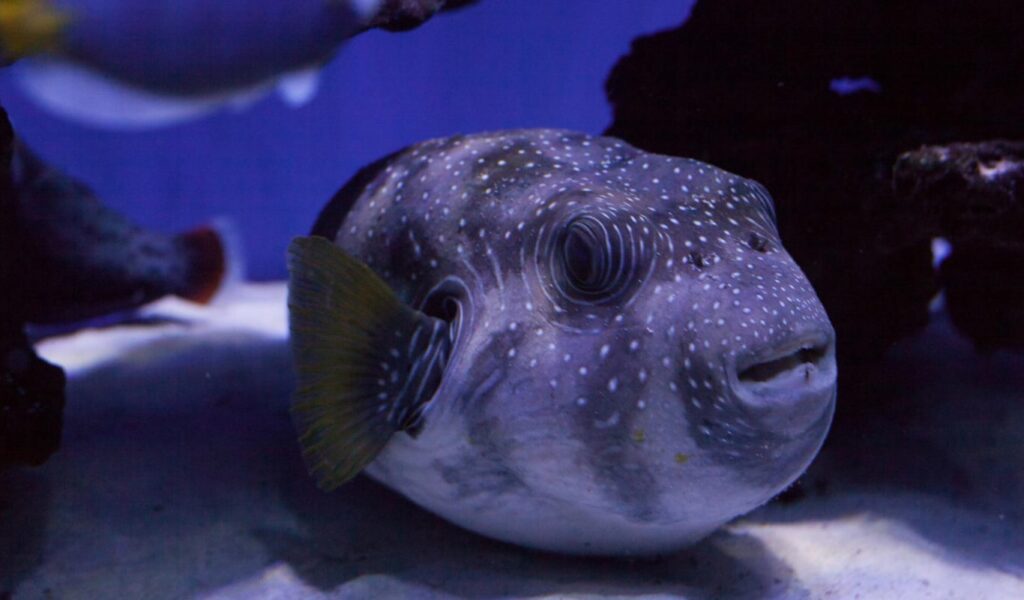


The white spotted puffer fish has the ability to build nests at the bottom of the ocean.
the largest Puffer Fish is reported to be 1 meter. However, when we talk about the smallest one, it is just 8 cm long.
The green spotted Puffer, pig-nose puffer, and bronze pufferfish can be kept as pets in the home.
Puffer fish is served as a delicacy in Japan and several other countries. In order to cook puffer fish chefs must have licenses as well as professional training to remove the toxin from the fish before they serve them.
They are usually found in warm ocean water; however there are 30 different species of puffer that live in freshwater.
They have a slow and clumsy style of swimming which makes it very easy for predators to catch them.
The more colorful the puffer fish, the more poisonous it will be.
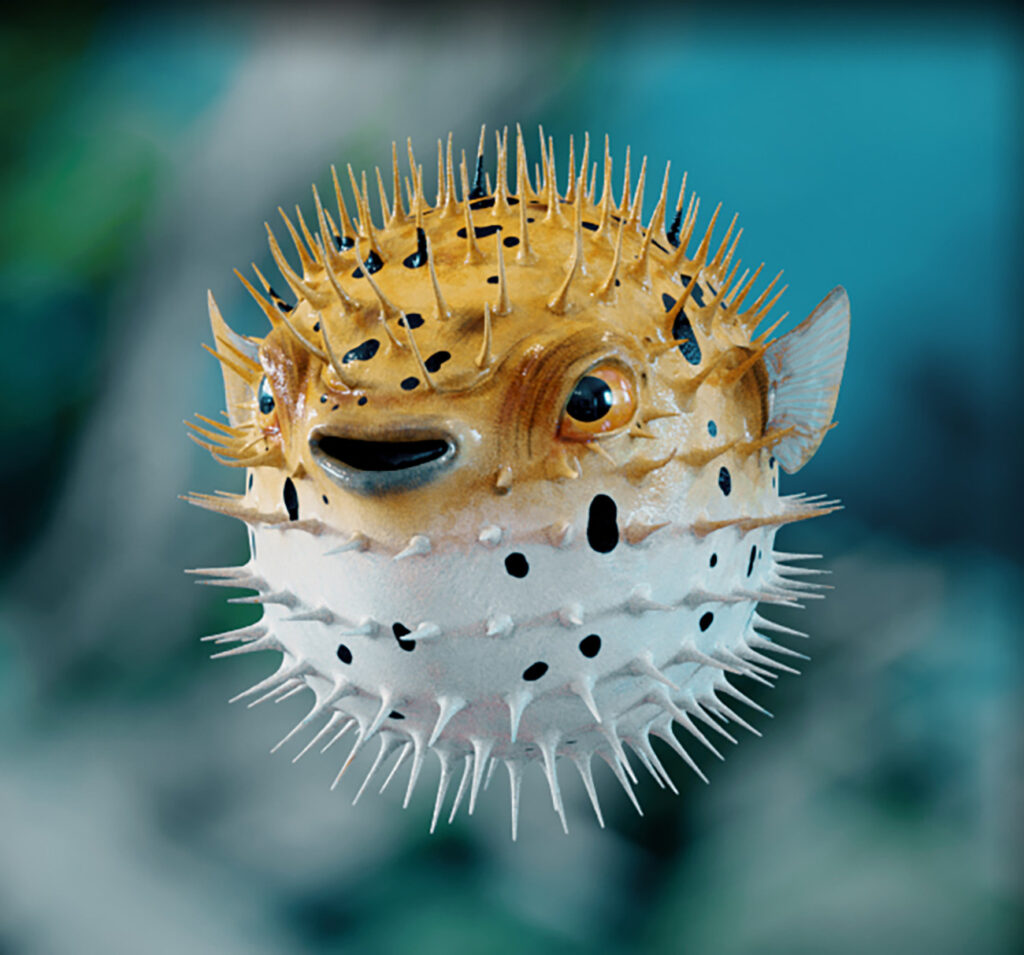

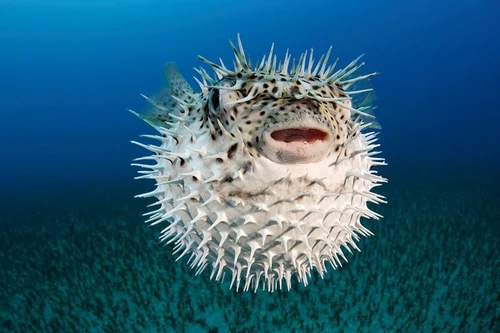
Fugu sashimi is the puffer fish that is consumed in Japan. It is generally eaten at a specific time of the year and on very special occasions. In many Western countries, fugu is illegal.
One puffer fish contains enough toxins to kill 30 humans.
The teeth of a puffer fish never stop growing. This is because they eat hard foods. So if you have one in your fish tank at home make sure that you provide it with food that has hard shells.
The average life span of the puffer fish is 10 years.
The most poisonous part of this fish is its liver.
Unsurprisingly, the most elastic part of the puffer fish’s body is its stomach.

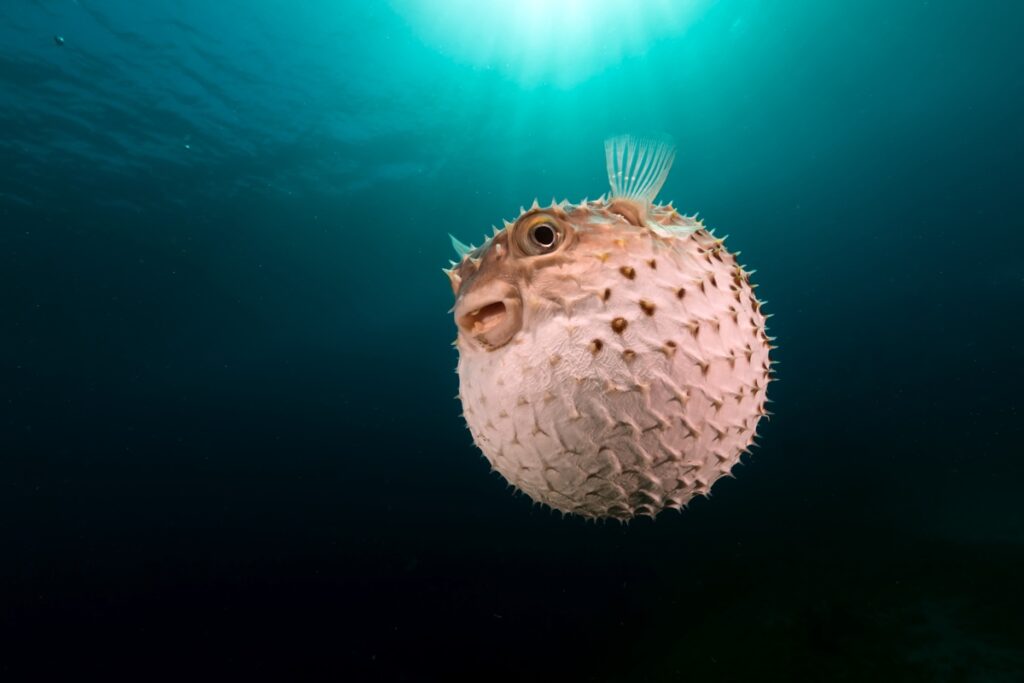
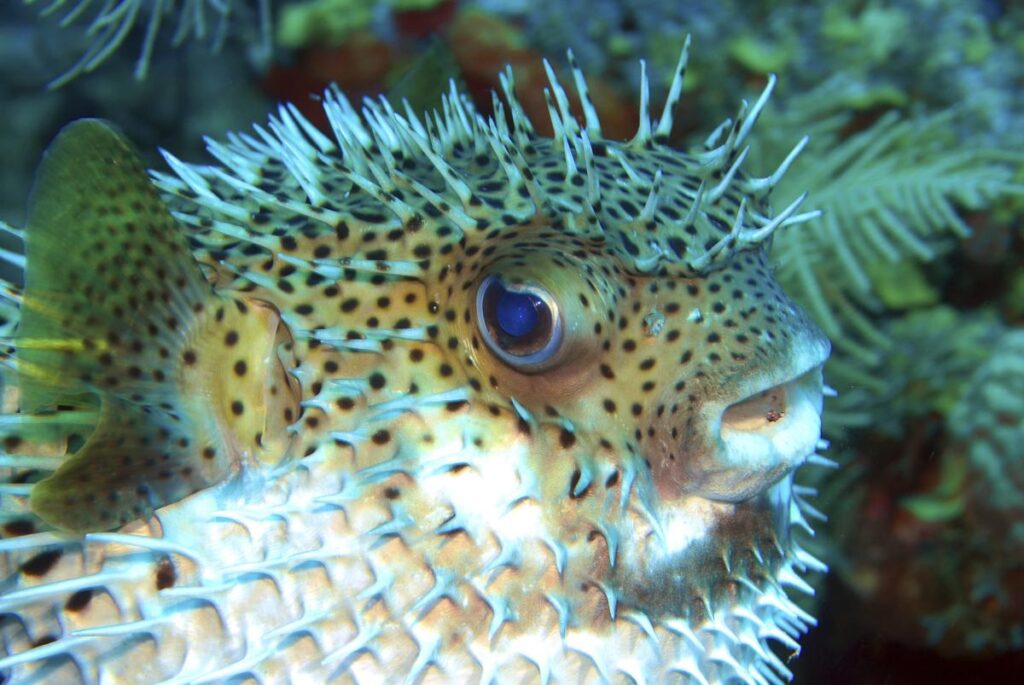
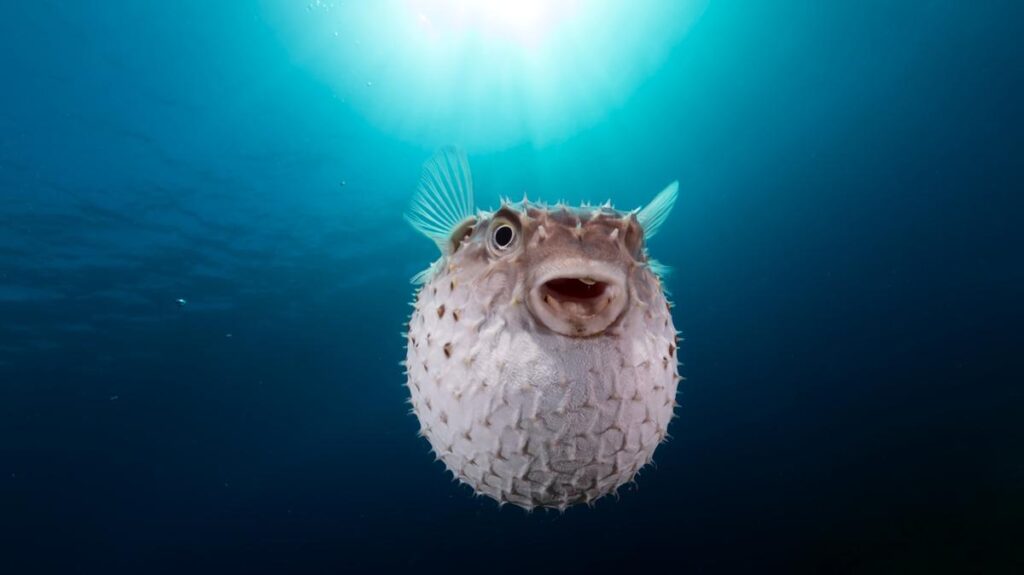


The largest puffer fish is the stellate puffer fish. The smallest puffer fish is the dwarf puffer fish.
Nile puffers or Tetraodon lineatus are one of the most popular kinds of freshwater pufferfish to keep as a pet. As the name implies, the gorgeous yellow striped fish are found in the Nile river and throughout Africa.
The category of pufferfish native to the northwest Pacific ocean are collectively known as Takifugu – these are the fish that were originally eaten as “fugu.” There are 25 different types of Takifugu, but they are all toxic.
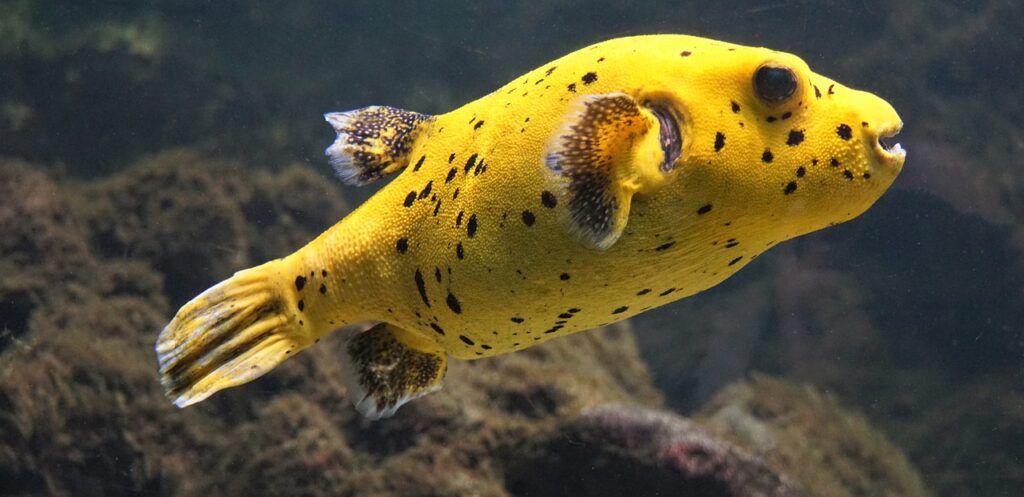
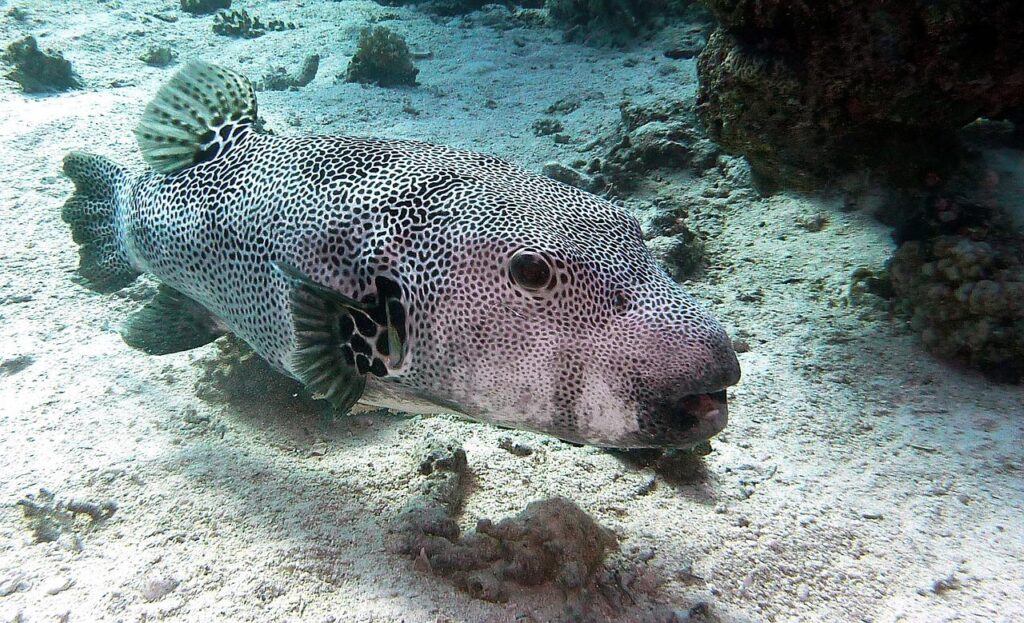
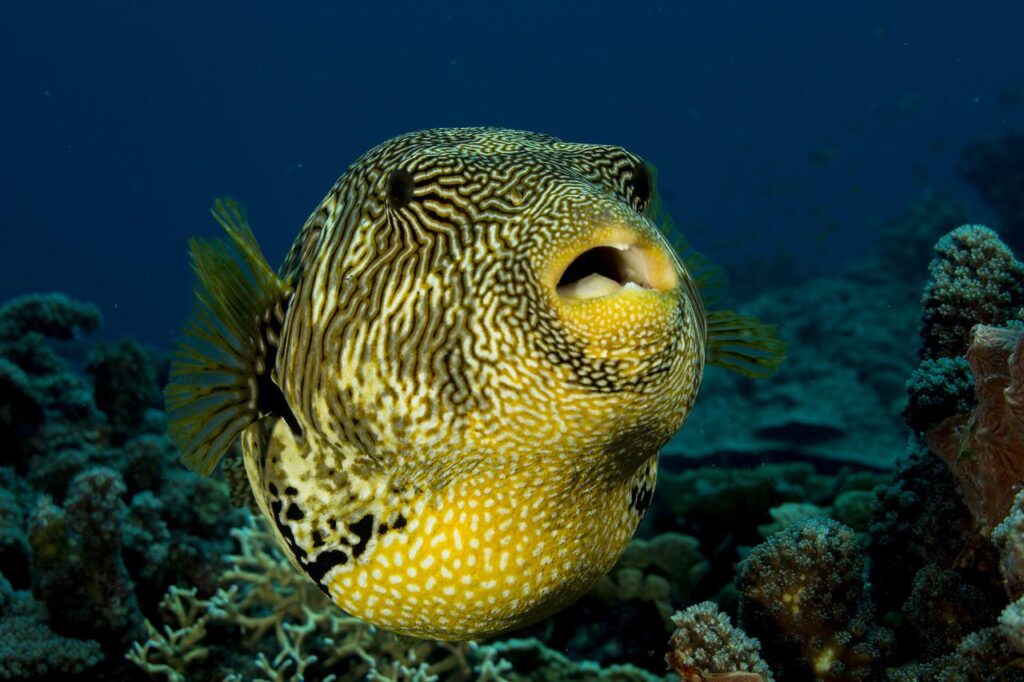
**BONUS**
check the YouTube video for this post



